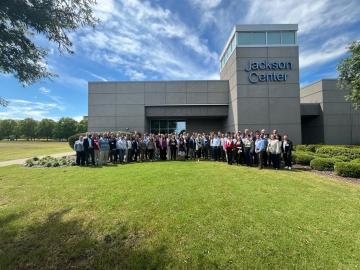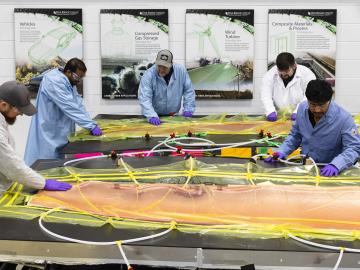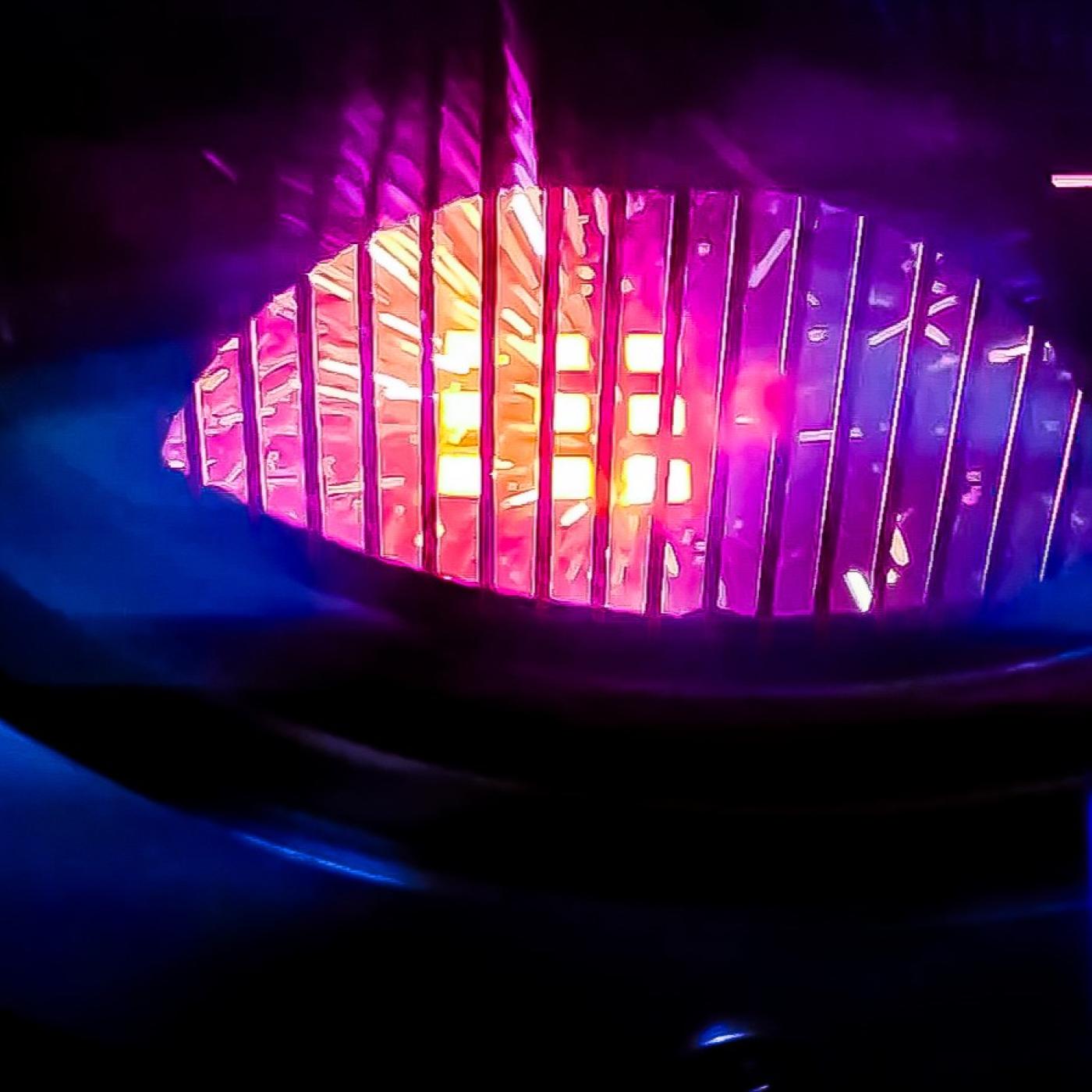
Filter News
Area of Research
News Type
News Topics
- (-) Clean Water (16)
- (-) Composites (10)
- (-) Cybersecurity (14)
- (-) Isotopes (32)
- (-) Machine Learning (29)
- (-) Materials Science (59)
- (-) Space Exploration (12)
- 3-D Printing/Advanced Manufacturing (49)
- Advanced Reactors (9)
- Artificial Intelligence (56)
- Big Data (37)
- Bioenergy (54)
- Biology (64)
- Biomedical (34)
- Biotechnology (14)
- Buildings (28)
- Chemical Sciences (30)
- Climate Change (59)
- Computer Science (97)
- Coronavirus (18)
- Critical Materials (6)
- Decarbonization (53)
- Education (2)
- Emergency (2)
- Energy Storage (36)
- Environment (115)
- Exascale Computing (34)
- Fossil Energy (4)
- Frontier (30)
- Fusion (33)
- Grid (28)
- High-Performance Computing (53)
- Hydropower (5)
- ITER (2)
- Materials (47)
- Mathematics (8)
- Mercury (7)
- Microelectronics (3)
- Microscopy (23)
- Molten Salt (1)
- Nanotechnology (20)
- National Security (51)
- Net Zero (9)
- Neutron Science (58)
- Nuclear Energy (61)
- Partnerships (23)
- Physics (37)
- Polymers (11)
- Quantum Computing (23)
- Quantum Science (35)
- Renewable Energy (1)
- Security (13)
- Simulation (37)
- Software (1)
- Statistics (2)
- Summit (34)
- Sustainable Energy (53)
- Transformational Challenge Reactor (3)
- Transportation (32)
Media Contacts

ORNL and NASA co-hosted the fourth iteration of this invitation-only event, which brings together geospatial, computational, data and engineering experts around a theme. This year’s gathering focused on how artificial intelligence foundation models can enable geospatial digital twins.

Biochemist David Baker — just announced as a recipient of the Nobel Prize for Chemistry — turned to the High Flux Isotope Reactor (HFIR) at Oak Ridge National Laboratory for information he couldn’t get anywhere else. HFIR is the strongest reactor-based neutron source in the United States.

The Advanced Plant Phenotyping Laboratory at ORNL utilizes robotics, multi-modal imaging, and AI to enhance understanding of plant genetics and interactions with microbes. It aims to connect genes to traits for advancements in bioenergy, agriculture, and climate resilience. Senior scientist Larry York highlights the lab's capabilities and the insights from a new digital underground imaging system to improve biomass feedstocks for bioenergy and carbon storage.

To bridge the gap between experimental facilities and supercomputers, experts from SLAC National Accelerator Laboratory are teaming up with other DOE national laboratories to build a new data streaming pipeline. The pipeline will allow researchers to send their data to the nation’s leading computing centers for analysis in real time even as their experiments are taking place.

ORNL researchers were honored with a prestigious ACE Award for Composites Excellence by the American Composites Manufacturers Association. The team won the “innovation in green composites design” prize for creating a fully recyclable, lightweight wind turbine blade tip that incorporates low-cost carbon fiber and conductive coating for enhanced protection against lightning strikes.

The Smoky Mountain Computational Sciences and Engineering Conference, or SMC24, entered its third decade with the 21st annual gathering in East Tennessee.

ORNL's Spallation Neutron Source, the nation’s leading source of pulsed neutron beams for research, was recently restarted after nine months of upgrade work.

Distinguished materials scientist Takeshi Egami has spent his career revealing the complex atomic structure of metallic glass and other liquids — sometimes sharing theories with initially resistant minds in the scientific community.

Daryl Yang is coupling his science and engineering expertise to devise new ways to measure significant changes going on in the Arctic, a region that’s warming nearly four times faster than other parts of the planet. The remote sensing technologies and modeling tools he develops and leverages for the Next-Generation Ecosystem Experiments in the Arctic project, or NGEE Arctic, help improve models of the ecosystem to better inform decision-making as the landscape changes.
After retiring from Y-12, Scott Abston joined the Isotope Science and Engineering Directorate to support isotope production and work with his former manager. He now leads a team maintaining critical equipment for medical and space applications. Abston finds fulfillment in mentoring his team and is pleased with his decision to continue working.


